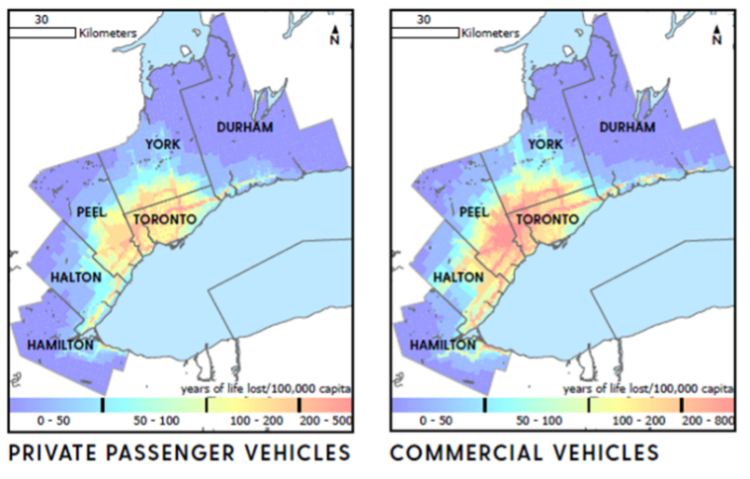An academic collaboration between 10 faculty researchers and more than 50 graduate students at the University of Toronto, McMaster University and York University is rethinking urban freight logistics.
The rise of e-commerce and home delivery, although convenient for consumers, has exacerbated challenges in urban freight logistics as the transportation and delivery industry continues to expand and freight emissions outpace those of passenger vehicles.
Led by Matthew Roorda, a professor in U of T's department of civil and mineral engineering in the Faculty of Applied Science & Engineering, the City Logistics for the Urban Economy (CLUE) research group is focused on reshaping the landscape of urban goods transportation by addressing four main areas: congestion, emissions, safety concerns and the equitable distribution of benefits and burdens.
That includes examining the equity and environmental justice implications of the rise of e-commerce and home delivery.
"Questions around winners and losers in the transition from brick-and-mortar to delivery, as well as the distribution of emissions from delivery vehicles, are being explored," Roorda says.
Since launching in 2020, CLUE's faculty researchers - along with 12 research sponsors, including federal, regional, non-governmental organization and industry partners - have worked on more than 24 projects.
Through their various research projects, CLUE aims to quantify the influence on the communities most impacted by freight logistics - particularly those living near highways and loading facilities.

Data collection and science also play a crucial role in CLUE's research. The group is currently developing the Freight Data Warehouse, a repository for large data sets such as GPS traces of commercial vehicles, with the aim of enabling further research using this valuable data.
"The goal is to build visualization dashboards to provide insights into greenhouse gas emissions, traffic patterns and travel speeds, empowering policymakers and the public to make informed decisions," says Roorda.
Various pilot projects have been successful outcomes of CLUE's research, such as Purolator's bike delivery initiative and an off-peak delivery project, which is providing data to guide the creation of a permanent Ontario program that relaxes noise bylaws for deliveries between 6 p.m. and 7 a.m.
"We have seen impact of our off-peak delivery pilot project on government policy changes, such as allowing night-time deliveries across Ontario," says Roorda.
To collect evidence of the impact of that change in policy, CLUE conducted community surveys after night-time deliveries were permitted to help assess the noise impact on residents and developed a freight transportation model to assess the greenhouse gas emissions impact.
CLUE also introduced a new truck driving simulator, where novice truck drivers can be trained to navigate extremely challenging urban areas safely while considering pedestrians and cyclists. The goal of this initiative is to enhance safety standards within the freight and logistics industry, another key research theme for the group.
"Everyone makes mistakes while driving, but when you're driving a huge truck in the city, you need to drive perfectly or else you put people at risk," says Roorda. "It's a very challenging job."
By proposing innovative solutions like new delivery models, curbside loading zone technology and lifting restrictions on late-night goods deliveries, CLUE seeks to make the goods movement network more efficient and less impactful on urban environments.






